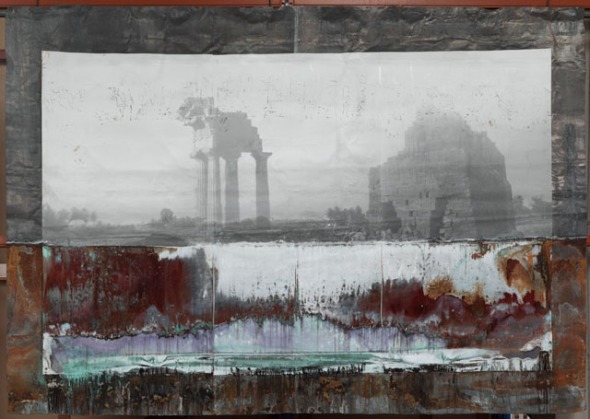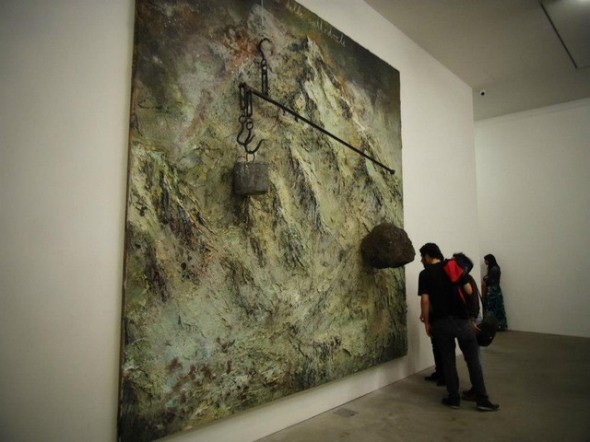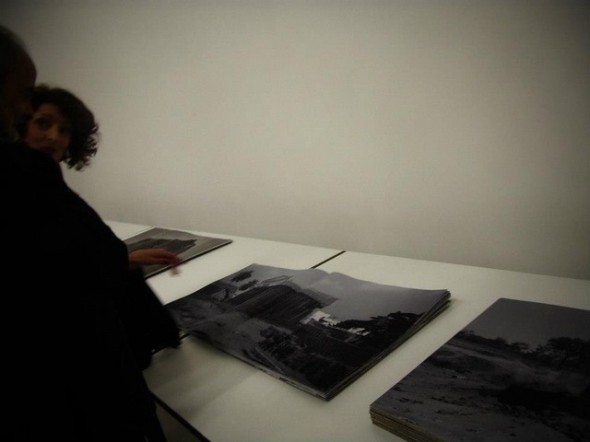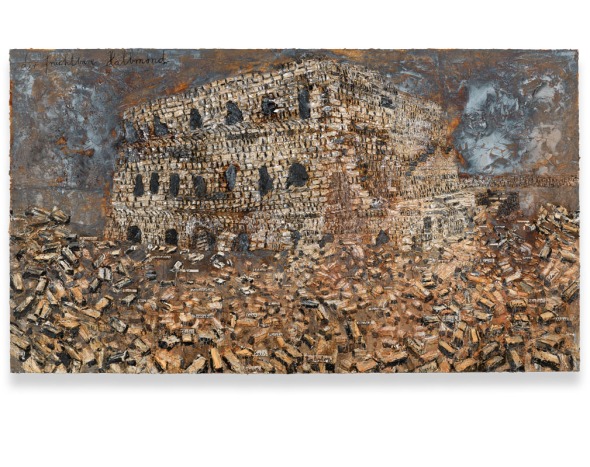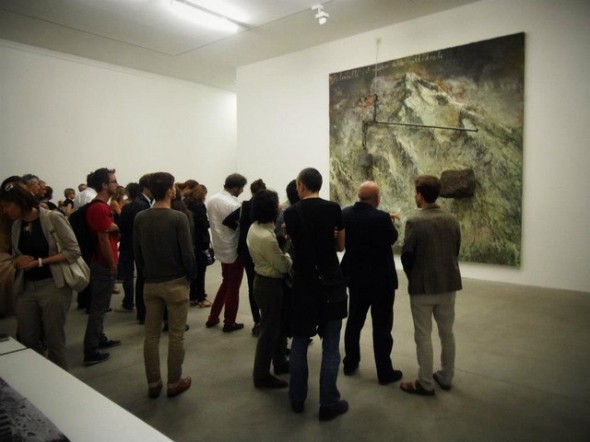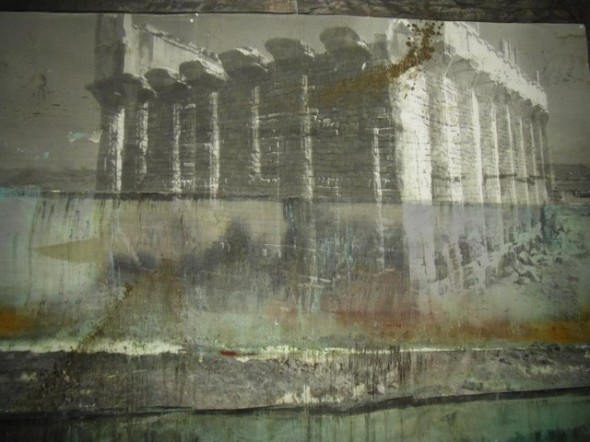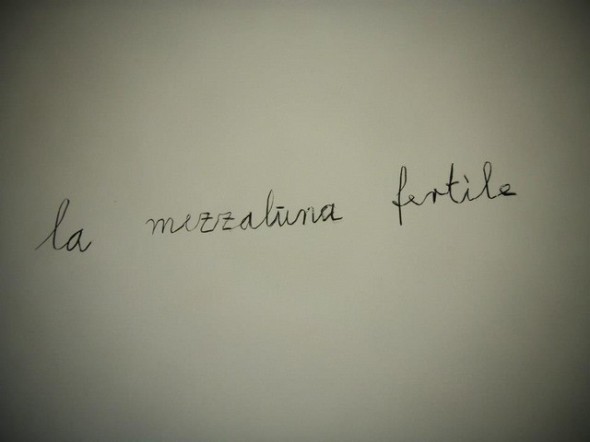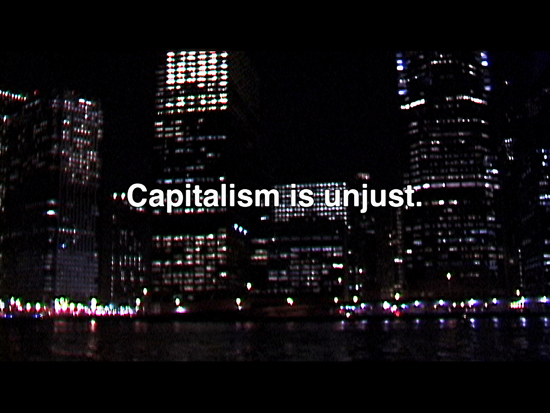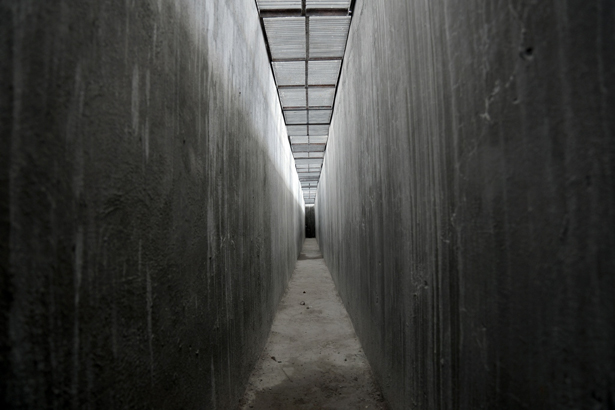Labels
303 GALLERY
AGE OF AQUARIUS
AI WEIWEI
ALDO MONDINO
ALIGHIERO BOETTI
ALLORA & CALZADILLA
AMSTERDAM
ANDREAS GURSKY
ANDREAS SCHON
ANDY CROSS
ANDY WARHOL
ANISH KAPOOR
ANNE IMHOF
ANSELM KIEFER
ANTON CORBIJN
ARNDT
ARNOLFINI
ART PROSPECT
ARTISSIMA
ARTIST BOOK
ATTILA CSORGO
BALI
BARBARA KRUGER
BARCELONA
BASEL
BASQUIAT
BEATRIX RUF
BELA KOLAROVA
BENJAMIN DEGEN
BEPI GHIOTTI
BERLIN
BERND E HILLA BECHER
BETTY WOODMAN
BIENNALE
BORIS MIKHAILOV
BRISTOL
BROOKLYN MUSEUM
CAI GUO-QIANG
CAMILLE HENROT'S
CANDIDA HOFER
CARDI GALLERY
CARL ANDRE
CAROL RAMA
CAROLEE SCHNEEMANN
CARSTEN HOLLER
CASTELLO DI RIVARA
CASTELLO DI RIVOLI
CATHERINE AHEARN
CENTRE POMPIDOU
CHARLES RAY
CHARLINE VON HEYL
CHICAGO
CHRIS BURDEN
CHRIS WATSON
CHRISTIAN BOLTANSKI
CHRISTIE'S
CHTO DELAT
COLOGNE
CONCEPTUALISM
COPENHAGEN
COSMIC CONNECTIONS
CRISTIAN BOLTANSKY
CY TWOMBLY
DAMIEN HIRST
DAN GRAHAM
DANH VO
DANIEL EDLEN
DANIEL RICH
DANNY MC DONALD
DAVID ZWIRNER
DIA ART FOUNDATION
DIET WIEGMAN
DIETER ROTH
DOCUMENTA
DUBAI
DUSSELDORF
ED ATKINS
EDEN EDEN
ELGER ESSER
EMILIO ISGRO'
ESKER FOUNDATION
ETTORE SPALLETTI
EVA HESSE
EVA PRESENHUBER
FANG LIJUN
FAUSTO MELOTTI
FELIX GONZALES-TORRES
FILIPPO SCIASCIA
FONDATION BEYELER
FONDATION CARTIER
FONDAZIONE MERZ
FRANCESCO BONAMI
FRANCESCO POLI
FRANCESCO VEZZOLI
FRANCIS BACON
FRANKFURT
FRANZ KLINE
FRIEDMAN
GABRIEL OROZCO
GABRIEL YARED
GAM
GARY ROUGH
GEORGE BURGES MILLER
GEORGE HENRY LONGLY
GERHARD RICHTER
GILBERT & GEORGE
GIULIO PAOLINI
GLADSTONE GALLERY
GREENE NAFTALI
GUENZANI
GUGGENHEIM
GUGGENHEIM BERLIN
GUGGENHEIM BILBAO
GUILLAUME LEBLON
HAMBURG
HAMBURGER BAHNHOF
HAMISH FULTON
HANGAR BICOCCA
HAUSDERKUNST
HAUSER & WIRTH
HE XIANGYU
HELENA ALMEIDA
HEMA UPADHYAY
HENRY MOORE
HIROSHI SUGIMOTO
HOWIE TSUI
HUANG YONG PING
IAN BREAKWELL
ICA
ICHWAN NOOR
INSTALLATION
INTERVIEW
ISABELLA BORTOLOZZI
ISTAMBUL
JAMES LAVADOUR'S ROSE
JAMES MELINAT
JAMIE XX
JANET CARDIFF
JANNIS KOUNELLIS
JASSIE BOSWELL
JEFF KOONS
JEPPE HEIN
JESSICA WARBOYS
JIVYA SOMA MASHE
JOAN FONTCUBERTA
JOHN BALDESSARRI
JOHN MCCRACKEN
JOHN STEZAKER
JON RAFMAN
JORG SASSE
JOSEPH KOSUTH
JOTA CASTRO
JURGEN TELLER
KARA TANAKA
KARL ANDERSSON
KARLSRUHE
KAVIN APPEL
KONRAD LUEG
KUNSTHAUS
KUNSTMUSEUM
LARRY BELL
LIA RUMMA
LISSON GALLERY
LIU YE
LONDON
LOUISE BOURGEOIS
LUC TUYMANS
LUCIAN FREUD
LUCIE STAHL
LUIGI MAINOLFI
LUISA RABBIA
MADRE
MAM PARIS
MARC QUINN
MARCO CASSANI
MARIA CRISTINA MUNDICI
MARIAN GOODMAN
MARINA ABRAMOVIC
MARIO MERZ
MARK LECKEY
MARK ROTHKO
MARTIN KIPPENBERGER
MARTIN McGEOWN
MARZIA MIGLIORA
MASSIMO DE CARLO
MATTHEW BARNEY
MAURIZIO CATTELAN
MAX SCHAFFER
MAXXI
MIAMI
MIKE PARR
MILAN
MIMMO ROTELLA
MING WONG
MOMA
MONTREAL
MOUSSE
MUMBAI
MUYBRIDGE
NATIONAL GALLERY
NEW YORK
NICO MUHLY
NOBUYOSHI ARAKI
NOTTINGHAM CONTEMPORARY
NY
OFCA INTERNATIONAL
OLAFUR ELIASSON
OSCAR MURILLO
OTTO PIENE
PACE GALLERY
PAOLA PIVI
PAOLO CURTONI
PARIS
PAUL MCCARTHY
PERFORMANCE
PHILIP GLASS
PHILIP-LORCA DICORCIA
PHILIPPE PERRENO
PHILLIPS DE PURY
PHOTOGRAPHY
PIA STADTBAUMER
PIPILOTTI RIST
PORTRAITS
PRISCILLA TEA
RAPHAEL HEFTI
REBECCA HORN
RICHARD LONG
RICHARD SERRA
RICHARD T. WALKER
RICHARD TUTTLE
RINEKE DIJKSTR
ROBERT MORRIS
ROBERT SMITHSON
ROBERT SMITHSON'S
ROBIN RHODE
ROMA
RON MUECK
RUDOLF HERZ
RUDOLF STIEGEL
RUDOLF STINGEL
SAM FRANCIS
SANTIAGO SERRA
SARAH SUZUKI
SCULPTURE
SHARJAH BIENNAL
SHIGERU TAKATO
SIMON THOMPSON
SOL LEWITT
SOPHIE CALLE
SPY
STEDELIJK MUSEUM
STEPHAN BELKENHOL
STEVE MCQUEEN
STEVE REINKE
SUBODH GUPTA
SUSAN PHILIPSZ
TALA MADANI
TATE BRITAIN
TATE BRITIAN
TATE MODERN
TERESA MARGOLLES
THADDAEUS ROPAC
THE RENAISSENCE SOCIETY
THOMAS EGGERER
THOMAS HIRSCHHORN
THOMAS RUFF
THOMAS SARACENO
THOMAS STRUTH
TIM FAIN
TOBIAS ZIELONY
TOM FRIEDMAN
TONY COKES
TONY CONRAD
TONY CRAGG
TOO MUCH
TOTAH
TOZER PAK
TURIN
TURNER PRIZE
UGO RONDINONE
UK
ULAY
VANESSA BEECROFT
VENICE BIENNALE
VERA LUTTER
VICTOR MOSCOSO
VICTORIA MIRO
VIENNA
VIK MUNIZ
VOID SERIES
WHITE CUBE
WHITECHAPEL GALLERY
WIELS
WILLIAMS PRESENHUBER
WU TSANG
YAN PEI-MING
YANG YONGLIANG
YOHJI YAMAMOTO
YOKO ONO
YUSUKE BENDAI
YVES KLEIN
ZHANG DAQIAN
ZURICH
16.9.12
TONY COKES | REDCAT
Tony Cokes: Retro
(Pop, Terror, Critique)
September 16–November 11, 2012
Opening: Saturday, September 15, 6–9pm
REDCAT631 West 2nd Street
Los Angeles, CA 90012
Los Angeles, CA 90012
For nearly three decades, video artist Tony Cokes has been engaged in a thorough examination of the uses of sound and image by forms of popular culture and mass entertainment. Working independently since the mid-1980s, and as part of the “art band” X-PRZ from 1991 to 1999, Cokes’ videotapes, sound and multi-media installations cull together a broad range of theoretical texts, popular music and archival images that are endlessly borrowed, recycled and sampled to look at the ways in which ideology and power are distributed and subsequently perceived and received. Cokes levels out the field of “appropriation” to include the products of intellectual culture and theoretical discourse, giving visual shape to a history of critical response and further implicating the “culture of critique” in the endgame of capitalism.
Retro (Pop, Terror, Critique), Cokes’ first solo exhibition in Los Angeles, brings together over 30 videos and text animations from the past 15 years. Taking the form of a new multichannel installation conceived for REDCAT by the artist, the exhibition offers a survey of Cokes’ recent output, while subjecting his own artistic practice to the looping processes of use and reuse. The repurposing of existing works to this end furthers the repetition of images, sounds and texts that has been characteristic of the artist’s work since his acclaimed Black Celebration (1988), which pairs newsreel footage of uprisings in urban black neighborhoods in the 1960s with textual commentary and popular music references from the 1980s.
“Pop Manifestos” (1998–present), “The Evil Series” (2001–present) and “Art Critique Series” (2008–present) are brought together for the first time in a series of eight programs that rotate each week of the installation’s eight-week run at REDCAT. Cokes’ extensive project maps a set of ongoing and concurrent interests that treat the discourses of cultural studies, media theory and art criticism as readymade systems of reference. Having described how perceptions of race, gender and class are perpetuated in the entertainment industry by what he calls the “representational regimes of image and sound,” Cokes’ videos indiscriminately redeploy texts from recent critical theory––whether borrowed from his own writing or from others––to reveal the complicity of critique as yet another form in the process of media representation.
Tony Cokes (b. 1956, Richmond, VA) currently lives and works in Providence, Rhode Island where he is Professor in Media Production in the Department of Modern Culture and Media at Brown University. His video, sound and multi-media installations have appeared in exhibitions and screenings at The Museum of Modern Art and The New Museum of Contemporary Art, New York; The Institute of Contemporary Art, Boston; MuHKA, Antwerp, Belgium; MACBA, Barcelona; and the Centre Georges Pompidou and La Cinémathèque Française, Paris. He has been included in such notable exhibitions as the 1st Berlin Documentary Forum at the House of World Cultures in Berlin (2010); the Whitney Biennial at the Whitney Museum of American Art in New York (2002, 1991); and Documenta X in Kassel, Germany (1997). His work also has received regular support from media-art festivals including Freewaves in Los Angeles; the Rotterdam International Film Festival in Rotterdam, The Netherlands; Rencontres Internationales Paris/Berlin/Madrid; the Oberhausen Short Film Festival in Oberhausen, Germany; and the Impakt Festival in Utrecht, The Netherlands. In 2008–09, Cokes was a Resident Scholar/Artist-in-Residence at the Getty Research Institute, Los Angeles.
Tony Cokes: Retro (Pop, Terror, Critique) is funded in part with generous support from Joy Simmons and The Faculty Development Fund, Brown University.
Gallery at REDCAT aims to support, present, commission and nurture new creative insights through dynamic projects and challenging ideas. The Gallery presents five exhibitions every year, often of newly commissioned work that represents the artist’s first major presentation in the U.S. or Los Angeles. The Gallery also maintains an active publishing program producing as many as two major monographs per year. Proceeding from the geographic and cultural specificities of Los Angeles, its program emphasizes artistic production of the Pacific Rim—namely Mexico, Central and South America and Asia—as regions that are of vital significance to California. The Gallery aims to facilitate dialogue between local and international artists contributing to a greater understanding of the social, political and cultural contexts that inform contemporary artistic practice.
Gallery at REDCAT is open Tuesdays through Sundays from noon to 6pm or until intermission. It is closed Mondays and major holidays. Admission to the Gallery at REDCAT is always free.
REDCAT is located at the corner of W. 2nd and Hope Streets, inside the Walt Disney Concert Hall complex in downtown Los Angeles (631 West 2nd Street, Los Angeles, CA 90012).
www.e-flux.com
12.9.12
REOPENING LA TALLERA
Announcing the reopening
of La Tallera
September 12, 2012
Sala de Arte Público Siqueiros-La TalleraVenus 52
Colonia Jardines de Cuernavaca
Cuernavaca Morelos 62360
Colonia Jardines de Cuernavaca
Cuernavaca Morelos 62360
T 01 777 3151 115
F 31 68 66 8
F 31 68 66 8
In September La Tallera, one of two studios inherited to the Mexican cultural system by artist David Alfaro Siqueiros, reopens its artistic program in Cuernavaca, Morelos. The studio has been adapted as a comprehensive program that includes an exhibition space, a digital documentation center on one of the most political and contradictory characters of modernity, international residencies for artists, art critics and curators, as well as a space for workshops and conferences.
La Tallera aims to become a space for the development and strengthening of art criticism. It will pursue research and production in relation to the local and global challenges that characterize the art circuit in Mexico.
After three years of renovation, La Tallera reinaugurates with an innovative architectural plan by Frida Escobedo, which problematizes the monumental and social qualities of Mexican Muralism to propose an institutional model that prioritizes the studio and development of discourse as the ideal of art production. Its design recalls certain structural elements of Russian Constructivism, while recovering the lattice motif popular in the Mexican architecture of the 1950s. Moreover, Escobedo kept intact the industrial character of the original exhibition space designed by Siqueiros, which was inspired by the vehicle assembly buildings and operated when Siqueiros developed the Polyforum Siqueiros.
From this historical perspective, its inaugural exhibition La Tallera: fábrica en movimiento (La Tallera: a factory on the move) curated by Mónica Montes and Natalia de la Rosa addresses the most thriving moment of Siqueiros’ life and his complex relationship with his uttermost noticeable patron, Manuel Suárez y Suárez. The exhibition focuses on the production of the mural La marcha de la humanidad en la Tierra y hacia el Cosmos (The March of Humanity on Earth and Toward the Cosmos) at La Tallera, which was commission by Suárez y Suárez. For the commission, Siqueiros requested the construction of an integral school-workshop dedicate to muralism. There, Siqueiros worked with a multidisciplinary group of workers, such as scientists, artists, and welders within a manufacturing system that allowed for the junction of technical, architectural and artistic knowledge.
To set off one of the most thought provoking contemporary space in the region, the exhibition was produced in collaboration with Isaac Broid and Marco Barrera. Together, the architectural team developed a museographical landscape inspired by Siqueiros´s concept of polyangular perspective, in which the public will be able to appreciate La Tallera: a factory on the move from multiple standpoints.La Tallera: a factory on the move will contribute to the analysis of the economic vision of the avant-garde in Latin America.
REBECCA HORN | MARIBOR ART GALLERY
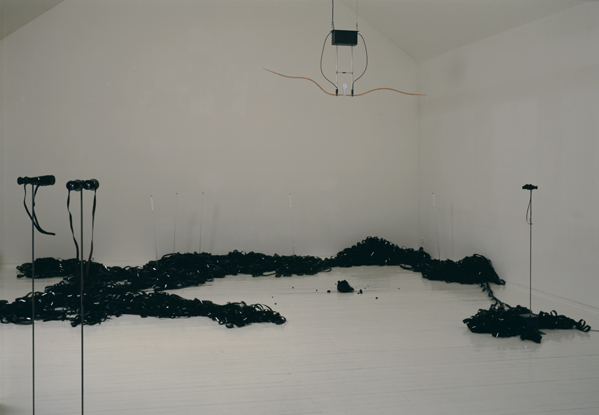
Rebecca Horn, Time Goes By, 1990/91. 40,000 meters of developed Hollywood film, coal, gas thermometers, binoculars, copper snakes, metronome, Buster Keaton’s shoes, metal constructions, motors, variable dimensions. © Rebecca Horn &
VG Bild-Kunst, Bonn.
VG Bild-Kunst, Bonn.
Rebecca Horn & Guests
Maribor Project28 September–11 November 2012
UGM | Maribor Art GalleryStrossmayerjeva 6
Maribor, Slovenia
Maribor, Slovenia
In 2012 Maribor holds the prestigious title European Capital of Culture. One of the highlights of the programme and the most important project for UGM / Maribor Art Gallery is Rebecca Horn’s Maribor Project. Rebecca Horn exclusively for UGM presents part of her most acknowledged works, selected personally by the artist, comprising installations, mechanised sculptures and drawings. Rebecca Horn also selected works by guest artists who represent one of the most exciting trends in the contemporary art, comprising sculpture, objects, installations and films. The artworks are brought into a dialogue with each other through content, material, form and sound connections, as the core of exhibition installation that creates unique course and sound experience. The exhibition will present around 70 artworks, one third of them by Rebecca Horn. The show is Horn’s first exhibition in Slovenia and for this occasion she will make an art installation exclusively for Maribor. Maribor Project will be accompanied with an exciting and varied programme, including an artist talk with Rebecca Horn, projection of Rebecca Horn’s film and literature evening with internationally renowned guests. The exhibition opening will feature a performance by Antonio Paucar and presentation of a music composition written by Hayden Chisholm especially for Rebecca Horn’s installation.
Since the beginning of the 1970s, Rebecca Horn has been creating an oeuvre consisting of an ever-growing flow of performances, films, sculptures, spatial installations, drawings and photographs. The distinctive character of her world of images consists in the extremely precise physical and technical functionality with which the artist presents her sculptures and the sequences of movements they perform in spaces. The most frequently recurring themes in Horn’s work are sexuality, human vulnerability and emotional fragility, which illustrates the richness and complexity of her work. In the first performances, the body-extensions, she explores the equilibrium between body and space. Following the physical experience of her performances with body extensions, masks and feather objects of the 1970s came the first kinetic sculptures featured in her films such as The Feathered Prison Fan in Der Eintänzer (1978), or The Peacock Machine in La Ferdinanda (1981). Maribor’s exhibition will display feather kinetic objects, such as Feather Wings (1992) and Large Feather Wheel(1997) made up of feathers and metal construction, that create a fragile, elusive impression while in motion. In the late 1970s and early ’80s Horn began to move away from body-centred art into more narrative work including a greater use of film. She used film initially to document her performances but since then has developed it into a new sphere of work, producing several feature films. The association between sculpture and film, which continues to be a key element of her work, is fully explored in the exhibition in works such as Time Goes By (1990/91), in which 40,000 meters of developed Hollywood film, thermometers, binoculars and copper snakes are presented in a mechanised installation in homage to tragic-comic actor Buster Keaton, whose shoes form the central focus of the installation. Installation Wounded Stones (1997) represents another, less serious aspect of Horn’s work in which the stabbed stones bleed and leave the blood stains on the wall. In the 1980s and 1990s huge installations were created out of and dedicated to places charged with political and historical importance, for example Tower of the Nameless (1994) and Concert for Buchenwald (1999). One of the key elements of the installations were mechanically playing instruments such as violins, cellos and drums, conveying the sound experience of certain space. Several mechanically playing instruments will be incorporated at the UGM exhibition. Musical instruments incorporated into installations open the sonic dimension of Horn’s work, which has recently been accompanied by the vocal and instrumental compositions of Hayden Chisholm, pieces of music that combine gracefully with the installations in their subtlety, fragility and hint at the unspeakable.
Guest artists: Matthias Deumlich, Ali Kaaf, Antonio Paucar, Jakob Schaible, Markus Wüste
Special guests: Hayden Chisholm, Yang Lian, Rod Mengham, Joachim Sartorius and Tomaž Šalamun
Production: Institut für Auslandsbeziehungen e. V. (ifa)/Institute for Foreign Cultural Relations
Initiator: Goethe-Institute Ljubljana
Coproduction: MARIBOR 2012 – European Capital of Culture, Art Always Wins/Terminal 12
Sponsor: Moontower Foundation
Special guests: Hayden Chisholm, Yang Lian, Rod Mengham, Joachim Sartorius and Tomaž Šalamun
Production: Institut für Auslandsbeziehungen e. V. (ifa)/Institute for Foreign Cultural Relations
Initiator: Goethe-Institute Ljubljana
Coproduction: MARIBOR 2012 – European Capital of Culture, Art Always Wins/Terminal 12
Sponsor: Moontower Foundation
11.9.12
ANDREAS GURSKY | MUSEUM KUNSTPALAST
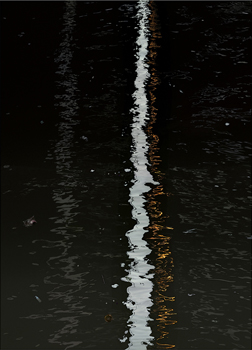
Andreas Gursky, Bangkok V 2011. C-Print,
307 x 227 x 6.2 cm (framed). © Andreas Gursky /
VG Bild-Kunst, Bonn 2012 Courtesy Sprüth Magers
Berlin London.
307 x 227 x 6.2 cm (framed). © Andreas Gursky /
VG Bild-Kunst, Bonn 2012 Courtesy Sprüth Magers
Berlin London.
Andreas Gursky
23 September 2012–13 January 2013
Museum KunstpalastEhrenhof 4-5
40479 Düsseldorf
Hours: Tue–Sun 11–6pm, Thu 11–9pm
40479 Düsseldorf
Hours: Tue–Sun 11–6pm, Thu 11–9pm
The exhibitionThe oeuvre of the Düsseldorf-based, internationally renowned photographic artist Andreas Gursky (born in Leipzig in 1955) offers in contemporary photography a new approach to realism. Often highly conceptual in his approach, Gursky makes full use of photo montage using digital technology. For his major exhibition at Museum Kunstpalast, Gursky selected 60 works from his oeuvre. Some of the more recent pieces are to be shown to the public for the first time in this one-off show. Rather than following a chronological order, the exhibition mixes new and old, small and some very large-scale works, offering new and unusual perspectives on Gursky’s photographic art.
Gursky’s subjects encompass architecture, landscape and interiors, as well as large-scale events attended by huge crowds. The Düsseldorf exhibition spans from the early 1980s through to the very recent series such as Ocean I-VI, 2010, and Bangkok, 2011.
Nearly all of Gursky’s photographic works are based on a multitude of shots. These are elaborately condensed together on a computer, becoming one integral composition. Gursky’s aim is neither to achieve documentary objectivity, nor to present a subjective perspective, but to create a synthesis of visual structures, and construct a perfect individual picture or series.
“Invariably, Gursky initially starts off by searching for images, and in a second step invents his picture. Gursky’s pictures do not appear out of nowhere, they are always based on a picture which existed previously. No matter, to what extent—he works on the ‘pre-picture’ until it finally matches what he had in mind.” –Beat Wismer, General Director Foundation Museum Kunstpalast
The series BangkokParticularly the series Bangkok, even more so than his cycle Ocean based on satellite images, testifies that Gursky is both an artist who works conceptually and a painter working with photography. The works show no hints as to the location of motifs, merely the title, Bangkok, suggests the location of the depicted shoreless flowing water.
The gaze on the Chao Phraya flowing through Bangkok, which does not fall upon the river from high above, but from a boat landing stage, the observation of the changing play of light on the water’s surface, as well as the aesthetic breaks caused by the waste floating in the river, gave Gursky the impulse for this new series. With a refined sense for painterly density, he examined the possible variations with a view to compositional aspects. He finally developed a total of ten works from the river’s light-shadow camouflage. In contrast to the Ocean work series, Gursky exclusively used portrait format for Bangkok. This lends each individual piece a meditative dimension.
Alternating between reality and fictional effect, especially the works of the Bangkok series exhibit a high degree of abstraction and offer scope for a wealth of painterly associations. They are reminiscent of Art Informel, or of Abstract Expressionist pictures by Clifford Still or Barnett Newman.
Andreas GurskyAndreas Gursky, who with his works makes a considerable contribution to the international significance of contemporary German photography, studied Visual Communication with Otto Steinert and Michael Schmidt from 1977 to 1981 at the Folkwang University in Essen. He subsequently continued his studies at the Academy of Art in Düsseldorf, where from 1985 until his graduation in 1987 he was master student of Bernd Becher. Along with artists including Candida Höfer, Axel Hütte, Thomas Ruff, Jörg Sasse and Thomas Struth, Andreas Gursky was part of the group of Becher students who coined the term “Düsseldorf School of Photography.”
In 2010 Andreas Gursky was appointed professor at the Düsseldorf Academy of Art, where he teaches free art.
CatalogueThe 112-page catalogue Andreas Gursky. Bangkok is published by Steidl, comprising textual contributions from Hans Irrek, Beat Wismer and John Yau.
Sponsors:
METRO GROUP, NATIONAL-BANK
METRO GROUP, NATIONAL-BANK
http://www.e-flux.com
Subscribe to:
Comments (Atom)



